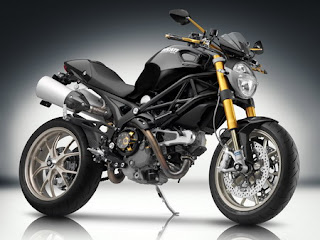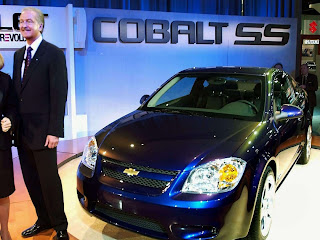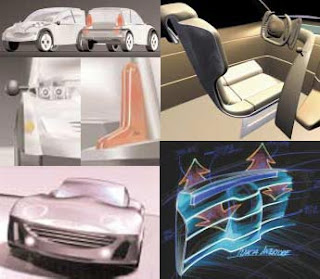2011 Ducati Monster 1100S Review
2011 Ducati Monster 1100S is one motorcycle issued by the manufacturer Aprilia with Tourbike edition which supported the body design is comfortable to use. 2011 Ducati Monster 1100S has a engine capacity 1078 cc with Bore x Stroke 98x71.5mm and than engine type L-Twin cylinder, 2 valve per cylinder Desmodromic, air cooled.
2011 Ducati Monster 1100S is one motorcycle issued by the manufacturer Aprilia with Tourbike edition which supported the body design is comfortable to use. 2011 Ducati Monster 1100S has a engine capacity 1078 cc with Bore x Stroke 98x71.5mm and than engine type L-Twin cylinder, 2 valve per cylinder Desmodromic, air cooled.
2011 Ducati Monster 1100S - North American Specifications
USA MSRP - $13,995 USD
Chassis
FRAME
Tubular steel Trellis frame
WHEELBASE
1450mm (57.1in)
RAKE
24°
FRONT SUSPENSION
Öhlins 43mm fully adjustable upside-down forks with TiN
FRONT WHEEL TRAVEL
130mm (5.1in)
FRONT WHEEL
Y-shaped, 5-spoke in light alloy 3.50 x17
FRONT TYRE
Pirelli Diablo Rosso Corsa 120/70 17"
REAR SUSPENSION
Progressive with preload and rebound Öhlins adjustable monoshock
REAR WHEEL TRAVEL
148mm (5.8in)
REAR WHEEL
Y-shaped, 5-spoke in light alloy 5.50 x 17
REAR TYRE
Pirelli Diablo Rosso Corsa 180/55 17"
FRONT BRAKE
2 x 320mm discs, 4-piston radial caliper
REAR BRAKE
245mm disc, 2-piston caliper
FUEL TANK CAPACITY
15l - 3.8 gallon (US) / 13.5l - 3.6 gallon (US) ABS version
DRY WEIGHT
168kg (370lb) / 170kg (374lb) ABS version
INSTRUMENTS
Digital unit displaying: Speedometer, rev counter, clock, scheduled maintenance warning, oil temperature, trip fuel, lap time, warning light for low oil pressure, fuel level, fuel reserve, neutral, turn signals, overrev, immobilizer. Ready for DDA system
WARRANTY
2 years unlimited mileage
BODY COLOUR (FRAME/WHEEL)
Red (red / racing gold) - Pearl white (matt black / racing gold)
VERSIONS
Dual seat
SEAT HEIGHT
810mm (31.9in)
DDA
DDA
DDA system-ready for Ducati Performance accessory
DTC
DTC
Not available on this model
ABS
ABS
Available upon request
Engine
TYPE
L-Twin cylinder, 2 valve per cylinder Desmodromic, air cooled
DISPLACEMENT
1078cc
BORE X STROKE
98x71.5mm
COMPRESSION RATIO
10.7:1
POWER
69.8kW - 95hp @ 7500rpm
TORQUE
10.5kgm - 75.9lb-ft @ 6000rpm
FUEL INJECTION
Siemens electronic fuel injection, 45mm throttle body
EXHAUST
2 aluminum mufflers
Transmission
GEARBOX
6 speed
RATIO
1st 37/15, 2nd 30/17, 3rd 27/20, 4th 24/22, 5th 23/24, 6th 24/28
PRIMARY DRIVE
Straight cut gears, Ratio 1.84:1
FINAL DRIVE
Chain; Front sprocket 15; Rear sprocket 39
CLUTCH
Dry multiplate with hydraulic control
Emissions
STANDARD
follows the US Federal Regulation
2011 Ducati Monster 1100S - UK Specifications
UK MSRP - Starting from £9,995 (Prices quoted are SRP's including VAT)
Chassis
FRAME
Tubular steel Trellis frame
WHEELBASE
1450mm (57.1in)
RAKE
24°
FRONT SUSPENSION
Öhlins 43mm fully adjustable upside-down forks with TiN
FRONT WHEEL TRAVEL
130mm (5.1in)
FRONT WHEEL
Y-shaped, 5-spoke in light alloy 3.50 x17
FRONT TYRE
Pirelli Diablo Rosso Corsa 120/70 17"
REAR SUSPENSION
Progressive with preload and rebound Öhlins adjustable monoshock
REAR WHEEL TRAVEL
148mm (5.8in)
REAR WHEEL
Y-shaped, 5-spoke in light alloy 5.50 x 17
REAR TYRE
Pirelli Diablo Rosso Corsa 180/55 17"
FRONT BRAKE
2 x 320mm discs, 4-piston radial caliper
REAR BRAKE
245mm disc, 2-piston caliper
FUEL TANK CAPACITY
15l - 3.8 gallon (US) / 13.5l - 3.6 gallon (US) ABS version
DRY WEIGHT
168kg (370lb) / 170kg (374lb) ABS version
INSTRUMENTS
Digital unit displaying: Speedometer, rev counter, clock, scheduled maintenance warning, oil temperature, trip fuel, lap time, warning light for low oil pressure, fuel level, fuel reserve, neutral, turn signals, overrev, immobilizer. Ready for DDA system
WARRANTY
2 years unlimited mileage
BODY COLOUR (FRAME/WHEEL)
Red (red / racing gold) - Pearl white (matt black / racing gold)
VERSIONS
Dual seat
SEAT HEIGHT
810mm (31.9in)
DDA
DDA
DDA system-ready for Ducati Performance accessory
DTC
DTC
Not available on this model
ABS
ABS
Available upon request
Engine
TYPE
L-Twin cylinder, 2 valve per cylinder Desmodromic, air cooled
DISPLACEMENT
1078cc
BORE X STROKE
98x71.5mm
COMPRESSION RATIO
10.7:1
POWER
69.8kW - 95hp @ 7500rpm
TORQUE
10.5kgm - 75.9lb-ft @ 6000rpm
FUEL INJECTION
Siemens electronic fuel injection, 45mm throttle body
EXHAUST
2 aluminum mufflers
Transmission
GEARBOX
6 speed
RATIO
1st 37/15, 2nd 30/17, 3rd 27/20, 4th 24/22, 5th 23/24, 6th 24/28
PRIMARY DRIVE
Straight cut gears, Ratio 1.84:1
FINAL DRIVE
Chain; Front sprocket 15; Rear sprocket 39
CLUTCH
Dry multiplate with hydraulic control
Emissions
STANDARD
Euro 3























































